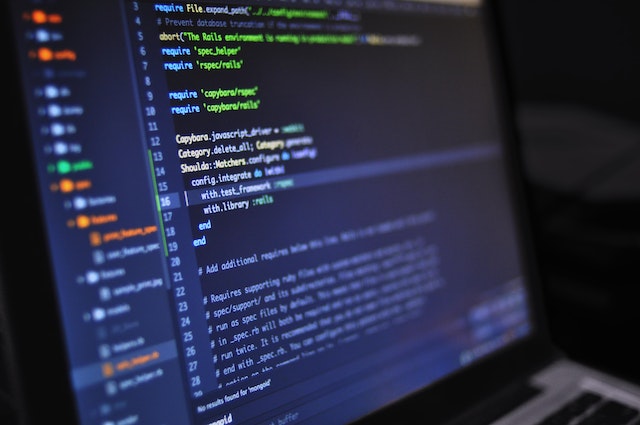The popular quote “information is the oil of the 21st century, and analytics is the combustion engine” paints a clear picture of the future.
This in turn demands improved and more effective management of massive data with clear and safe maintenance structures in place.
What is Big Data?
 Big data refers to huge amounts of data generated through the increasing use of electronic devices and tools and information systems via the internet. This is obtained from the users’ actions and use through web searches, tweets or posts on online platforms, participation in an online casino or using online shopping platforms, among many others.
Big data refers to huge amounts of data generated through the increasing use of electronic devices and tools and information systems via the internet. This is obtained from the users’ actions and use through web searches, tweets or posts on online platforms, participation in an online casino or using online shopping platforms, among many others.
Big data is meaningless without context and the four types of data that are part of big data analysis comprise descriptive, diagnostic, predictive, and prescriptive data.
The benefits of using data analytics include, among others, an understanding of the behavior patterns of citizens, users, and consumers to improve the effectiveness of commercial and policy outcomes as well as better anticipating of requirements, which allows targeted policy solutions to decrease inefficiencies.
What are the Risks of Big Data?
Big Data’s potential risks include:
- Increased privacy violations through increased tracking
- Data integration in conjunction with the diversity of cultures sharing of data, dispersing data across different countries, organizations, languages, and forms
- Increased computing capacity and storage demands
The owner of the collected data is the organisation that stores and reviews the data for its own use. The public sector and the governments regard personal data as a public good and take on an increasingly active regulatory role in the modernization of policies to safeguard it from unauthorized processing by introducing new data protection legislation such as the GDPR for example.
This raises questions about how governments are using data analytics across the world to handle the big data they collect.
Global Models of Big Data Processing
1. Singapore
In Singapore, open data sharing is a key area of Singapore’s Smart Nation vision wherein ‘data.gov.sg’ as a portal provides the data of more than 70 government agencies, making it accessible for the utilization of data visualization. More than 20,000 employees, or 14% of the public sector, are receiving training in data sciences.
2. China
In contrast, there is China, where there is a Personal Data Protection Guideline that is not binding, and the regulatory rigidity is not high. Additionally, the practice of government-sponsored promotion and regulation for big data collection is an important factor to take into consideration here.
The degree of rigidity in regulation is very high within regions like the European Union, Singapore, and Japan, in which there is a General Data Protection Regulation or Personal Data Protection Act, and data sharing is based on consent deemed to be valid.
Consequently, the question is “which is the most efficient and desirable model”, where protection for personal data plays an important part.
How to achieve the ideal Balance between Big Data and Data Privacy?
 While excessively rigid regulations can hinder the process of creating public policy as well as research into healthcare, and even businesses and research, regulations that are too loose can be an infringement of privacy and, consequently, its trade-offs are pertinent.
While excessively rigid regulations can hinder the process of creating public policy as well as research into healthcare, and even businesses and research, regulations that are too loose can be an infringement of privacy and, consequently, its trade-offs are pertinent.
The data protection and promotion model that Japan offers is a delicate equilibrium in the “trade-off”. While the Personal Data Protection Act prohibits the use of deemed consent for sensitive data, its “Next Generation Healthcare Infrastructure Act” permits the agency for anonymization to handle medical data with deemed consent, and researchers receive information through the organization.
The Role of Data Philanthropy
Data Philanthropy also has a role to play in this context and the problem is: What’s going on for the data providers? Data providers can solve problems for the public which cannot be solved through existing data sources. They connect philanthropic and business efforts with the benefit of business and customers.
Data Philanthropy mitigates potential business risks by contributing to a better-educated policy environment, generating goodwill, promoting community partnerships, providing insight for social good, validating internal data, and spurring the development of new ideas. It is generally referred to as sharing private information for the benefit of society.
The Role of Sesame Credit
Sesame Credit, an affiliate of the Chinese Alibaba Group, uses Alibaba’s data to create a score that is determined by social media interactions as well as purchases made through Alibaba Group websites or paid by its affiliate’s mobile wallet.
They facilitate bike-share services, power bank service, as well as small loans, and its advantages, include reducing the cost of trust, supplying credit services to more Chinese people, and assisting in building an enduring society.
The Role of Disaster Big Data Management
 Another interesting example is “disaster big data in Japan” which assisted it in the process of rebuilding following a disaster such as a tsunami or an earthquake. It assisted Japan in obtaining answers to questions such as how many people lived in the affected area at exactly the time the tsunami hit the area, ‘what was the behaviour of those living in the area affected at the time that the evacuation warning was announced’, ‘how long did it take to go 100m along the heavily congested road to get out to the evacuation zone’ etc.
Another interesting example is “disaster big data in Japan” which assisted it in the process of rebuilding following a disaster such as a tsunami or an earthquake. It assisted Japan in obtaining answers to questions such as how many people lived in the affected area at exactly the time the tsunami hit the area, ‘what was the behaviour of those living in the area affected at the time that the evacuation warning was announced’, ‘how long did it take to go 100m along the heavily congested road to get out to the evacuation zone’ etc.
The basis for this is data collection from car navigation GPS platforms and tweets or posts that were shared via popular platforms over one week following the catastrophe, including GPS data of mobile phones, simulation data from the disaster, policies of recovery by the government as well as others.
The data, in this case, indicates that not just the geography of the city, which is surrounded by rivers as well as the frequent inflow from “pick-up” behaviours, created massive traffic jams where vehicles were unable to move.
It could be a significant cause of the massive number of deaths or missing people. This has helped Japan to devise disaster-resistant city planning in the Rehabilitation Master Plan.
Final Thoughts
Therefore, the best way forward for a good balance between Big Data and Data Privacy is to take into consideration the policymakers’ perspectives on the issue of confidentiality and data analytics. There must be clearly defined goals for using big data that are crucial to bringing together several institutions. There is a need to find a line between the demands of open data platforms, the maintenance and operating costs, and the significance of taking decisions based on the analysis of big data.































